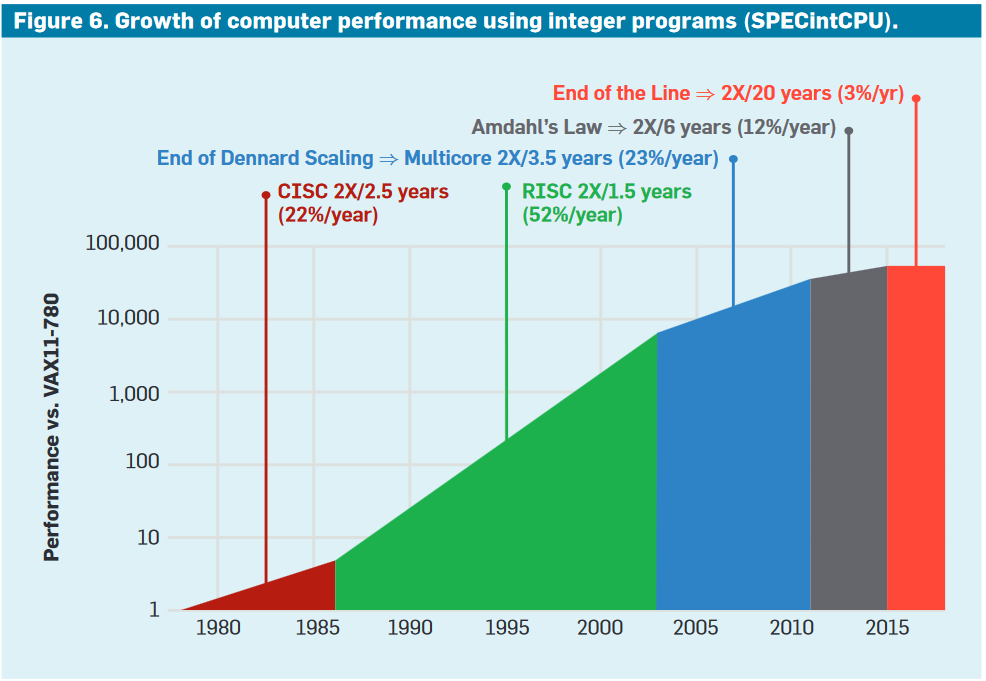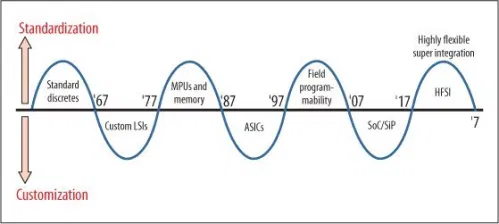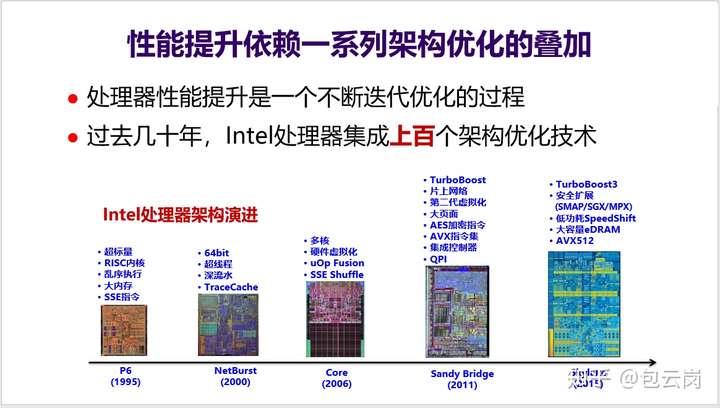[Glean] Computer Architectures for Next Generation Applications
Computer Architectures for Next Generation Applications1
Three Laws: Moore's law, Makimoto's wave, Bell's law
Moore's law
Moore's law is not end, but slower.

Not all the transistors are used wisely2. They can speed up the performance of one Python program by $62,806\times$ via fully utilizing CPU.
From the software engineers' aspect, this huge performance gap means that most of the engineers can not full utilize CPU.

One possible method can be utilizing domain specific architectures. This is one method to implement the algorithms into hardware directly instead of using software programs, which can be orders of magnitude speeds up.
Makimoto's wave
In the early 1990s, Dr Tsugio Makimoto made an observation while working as Sony’s chief technology officer. He had observed that electronics cycled between custom solutions and programmable ones approximately every ten years.3

Things behind this law is the trade off between power and performance. As for CPU, its the balance between general purpose architecture and DSA, which represent a higher development efficient and a better performance respectively.
Bell's law
Roughly every decade a new, lower priced computer class forms based on a new programming platform, network, and interface resulting in new usage and the establishment of a new industry.
Coming into the AIoT aging, the demanding of processors will burst while the requirements are also fragmented. This can be a challenge to current design methodologies and industry to fulfill fragmented requirements.1
Design Methods and Optimzations for DSA
Performance and power
Reduce data movements
- custom instructions can reduce the number of instructions and optimize some operations
- utilize cache. replacement, prefetch, compress, schedule.
Reduce data precious
Mixed precious data computation.
May use Posit data format to mix the data precious.
Improve parallelism
Instruction Level Parallelism(ILP), Memory Level Parallelism(MLP)
Superscalar, Multithreading, SIMD, STMD, Systolic Array
Fragmented requirements
History of CPU

The state changing of CPU is driven by the software program. Therefore, the optimization in the CPU level is finding the common behaviors in the programs and accelerate them, which requires the knowledge in software programming, operation system, compiler and computer architecture.
-
"多核之后,CPU的发展方向是什么 - 知乎", https://www.zhihu.com/question/20809971/answer/1678502542 (Accessed: Jan. 18, 2021.). ↩ ↩2
-
C. E. Leiserson et al., “There’s plenty of room at the Top: What will drive computer performance after Moore’s law?,” Science, vol. 368, no. 6495, Jun. 2020, doi: 10.1126/science.aam9744. ↩
-
“Makimoto’s Wave,” Semiconductor Engineering. https://semiengineering.com/knowledge_centers/standards-laws/laws/makimotos-wave/ (accessed Jan. 18, 2021). ↩